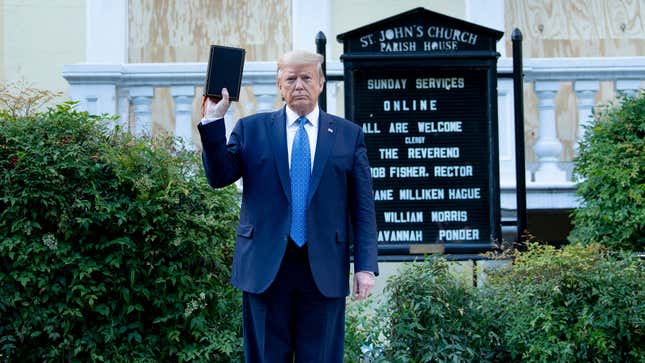The Shooting Starts No Matter What
Latest
Image: Getty
On May 28, President Donald Trump invoked former Miami police chief Walter Headley, famous racist and police violence advocate, when he tweeted, “Any difficulty and we will assume control but when the looting starts, the shooting starts.” The turn of phrase has always been a convenient lie for those seeking power through force. In reality, the shooting starts first, and the chaos follows.
News footage has evaded the human bodies harmed during peaceful protests, more interested in damage done to Target superstores. But the injuries to protesters—and rarely those protesters who smash and grab in the wake of the pandemonium created by rubber bullets and tear gas—are often severe. The last week has been full of violent police efforts for control across the country—from cops ramming squad cars into unarmed crowds in New York City and Boston to police firing rubber bullets and tear gas into peaceful crowds in Washington D.C so that Donald Trump could get a photo op wielding a Bible in front of a church. And as the murders of George Floyd, Breonna Taylor, and Tony McDade have mobilized nearly a week of marches and protests, they have also proven the damage that a “non-lethal” rubber bullet can do.
On Saturday, hundreds of people gathered at Pan Pacific Park in Los Angeles’s tony Fairfax area before walking as a group down West 3rd, a usually quiet street lined with sidewalk cafes. The protesters chanted “Whose streets? Our streets” and “Black lives matter,” and cars stopped in the middle of the street honked in solidarity with the protesters streaming past. Outside the Original Farmer’s Market, which houses more shops and a large, touristy restaurant on West 3rd and Fairfax, the crowd bottlenecked, still chanting as onlookers ate overpriced sandwiches on the cafe’s patio, a vestige of newly relaxed covid-19 restrictions.
Two blocks west of the chanting crowd, out of sight of the brunch-eating looky-loos, police in full riot gear had formed ranks at several different points along the street, armed with rifles and neon green “rubber bullets” strapped to their chests, trapping protesters between their lines.
-

-

-

-

-

-

-

-

-

-

-

-

-

-

-

-

-

-

-

-

-

-

-

-

-

-

-

-

-

-

-

-

-

-

-

-

-

-

-

-









































